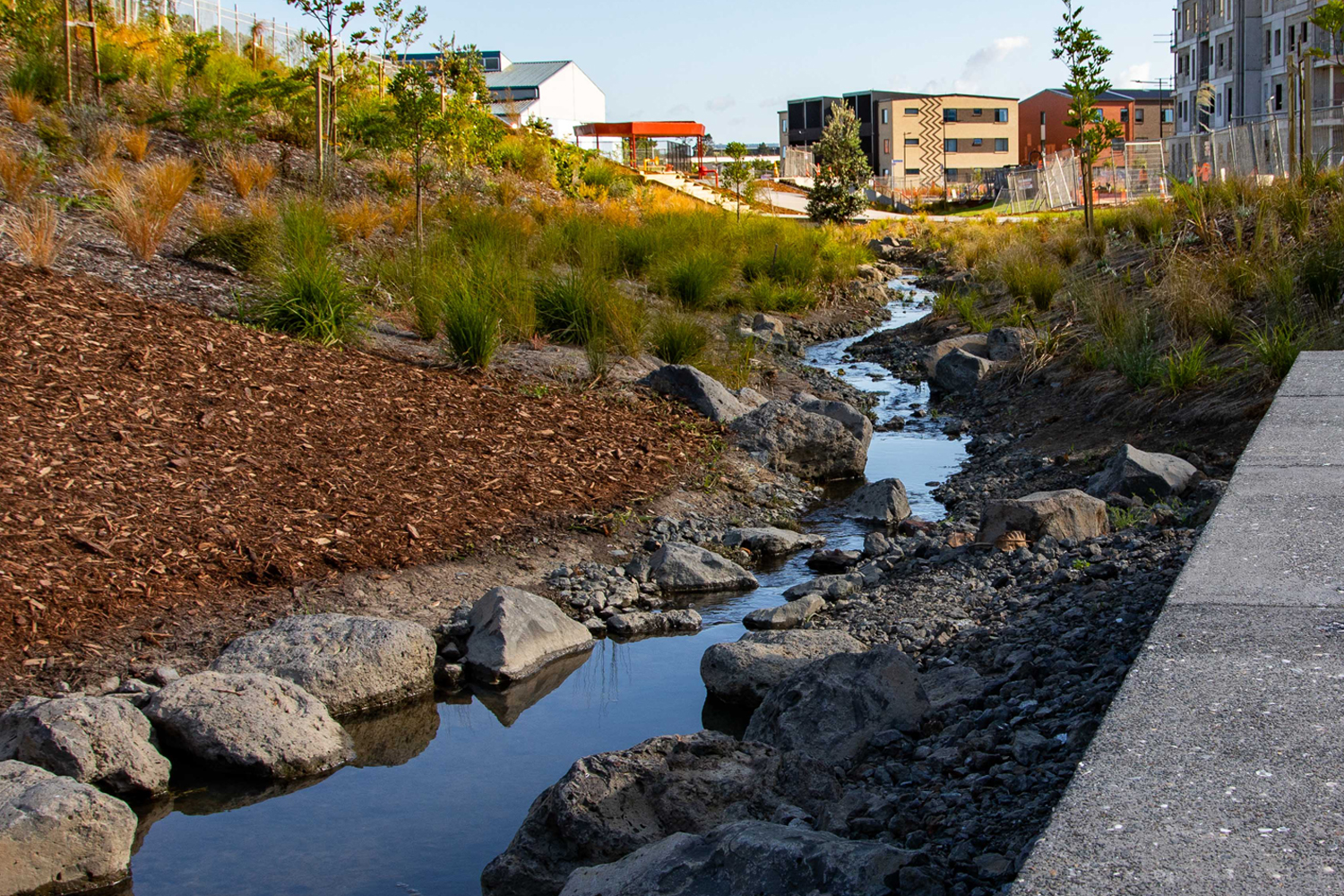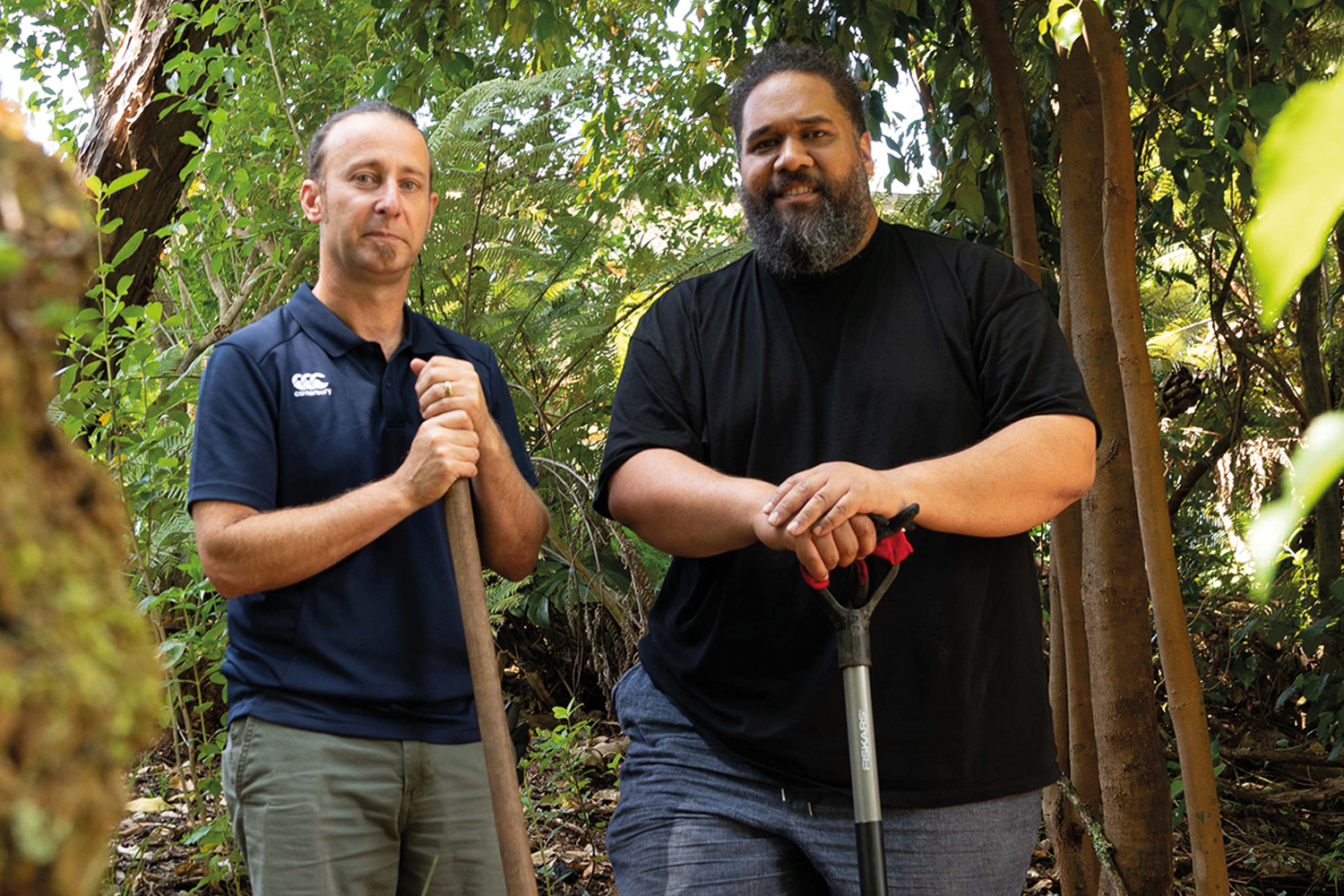As work continues to lift the ‘mauri’ or life essence of Northcote’s Awataha Stream and surrounding environment, more tuna or longfin eels are expected to return to the habitat.
Since 2019, a number of agencies and committed local volunteers have been involved in regenerating the stream as part of Te Ara Awataha greenway — a green ‘corridor’ of parks and spaces which follows the path of the Awataha Stream and connects the Northcote neighbourhood.
Activity has been focused on the source of the stream in Jessie Tonar Scout Reserve, but shortly the wider greenway, from Onepoto Awhina Educare Centre to Tonar Street will be opened for the community to enjoy.
As well as work to improve biodiversity and water quality through weeding and planting, a significant part of this project has been ‘daylighting’ the stream — this means water that runs through underground pipes is brought up above the groung in a recreated stream channel — creating a better environment for eels and other life to thrive.

“The work at the Awataha Stream is all about encouraging life and biodiversity,” says Sam Tu’itahi, previous Community Activator for the Kaipātiki Project. Sam says it was two years before he saw not one but two tuna appear during the monthly investigation of the stream. It was a great moment.
“We are there every month, always wondering what is going to turn up. Tuna was one of those species that really tell us the story about the health of the stream. Something you want to see in every stream really.”
Work on the regeneration of the Awataha Stream has been a collaborative effort — combining the efforts of Eke Panuku, the Kaipātiki Project, Mana Whenua, Kāinga Ora — Homes and Communities, Kaipātiki Local Board, three schools; Onepoto Primary, Northcote Intermediate and Northcote College, as well as volunteers from the community.
“We are really excited to engage the community in other parts of Te Ara Awataha,” says Sam. “It’s about connecting people to each other and hopefully that connects people to the land as well.”
